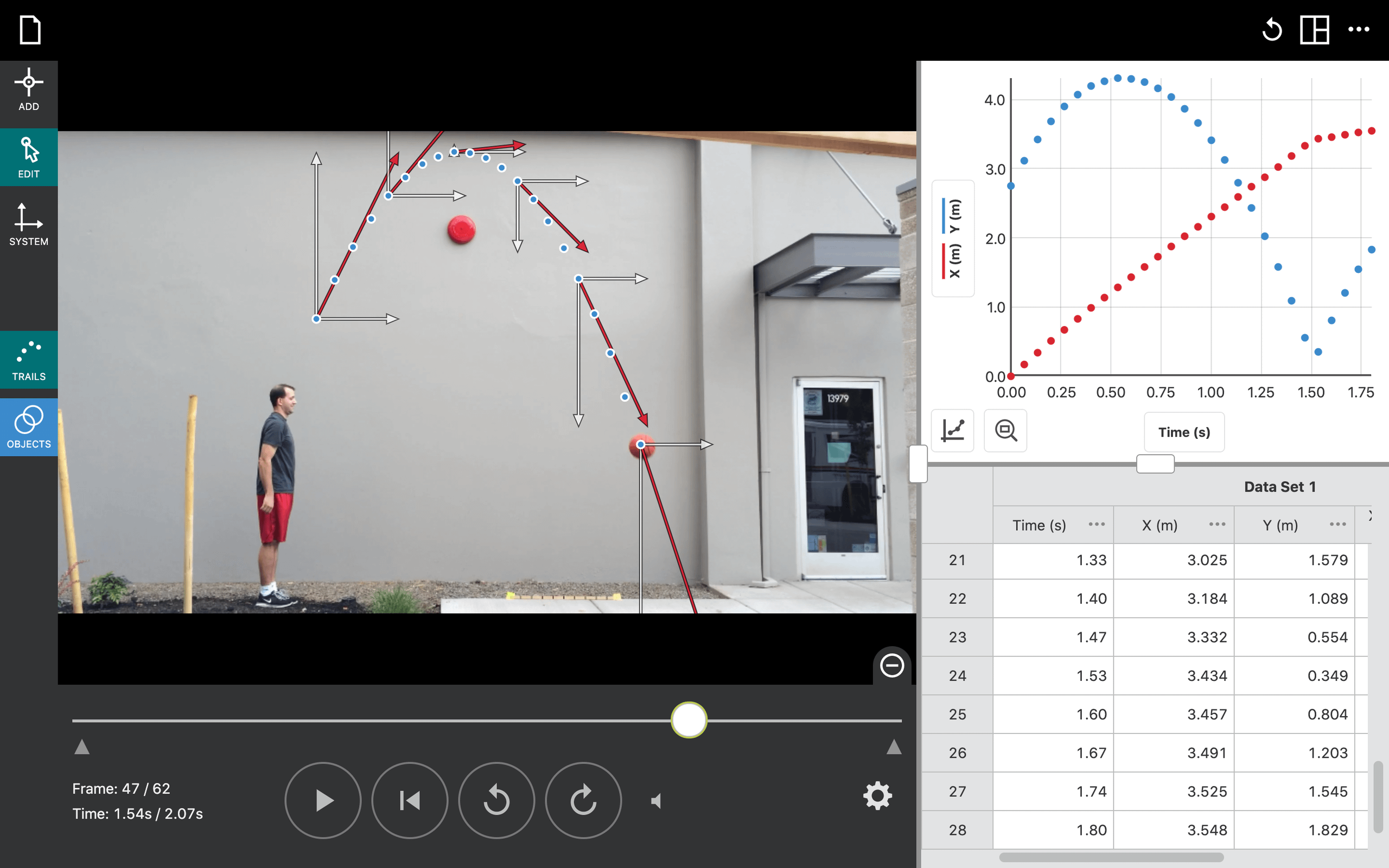More Weight Lifting: Bicep Curls
Experiment #10 from Vernier Video Analysis: Conservation Laws and Forces
- Subject
- Physics
Introduction
In Activity 2, Introduction to Weight Lifting, the lift force for a bench press was found using the analysis of the net force acting on the weight throughout the lift. In that activity, the motion of the lift and the direction of the forces were all in the vertical direction. Another common lift is the bicep curl where the lifter is applying a force to their forearm to produce a rotation about the elbow joint. While the forces are still all in a vertical direction (we will make that simplifying assumption), the motion is rotational and not linear. Because of this, you need to investigate the net torque of the system through the lift in order to determine the lift force.
In this experiment, you will use the Vernier Video Analysis app to examine the motion of a test subject performing a bicep curl. Using the analysis features in the app, you will investigate the angular displacement and angular velocity of the weight during the rising phase of a bicep curl to find a portion of the lift where the net torque can be considered to be zero (constant angular speed). You will use data from this portion of the lift to calculate the lifting force for the bicep curl. As time permits (or as required by your instructor), you can complete one or more of the extensions or design your own investigation using videos of lifts that you record.
Objectives
- Use video analysis techniques to obtain position, velocity, angle, angular velocity, and time data for a human subject performing a seated bicep curl.
- Analyze the rotational motion of the weight as it is raised during a bicep curl.
- Identify a portion of the lift where the weight’s angular velocity is relatively constant.
- Calculate the lift force for the constant angular velocity portion of the lift.
- [Extensions] Create and analyze your own videos of a person lifting in different ways.
Sensors and Equipment
This experiment features the following sensors and equipment. Additional equipment may be required.
Correlations
Teaching to an educational standard? This experiment supports the standards below.
- International Baccalaureate (IB) 2025/Physics
- The students should understand the torque τ of a force about an axis as given by τ = Fr sin θ
Ready to Experiment?
Ask an Expert
Get answers to your questions about how to teach this experiment with our support team.
- Call toll-free: 888-837-6437
- Chat with Us
- Email support@vernier.com
Purchase the Lab Book
This experiment is #10 of Vernier Video Analysis: Conservation Laws and Forces. The experiment in the book includes student instructions as well as instructor information for set up, helpful hints, and sample graphs and data.


